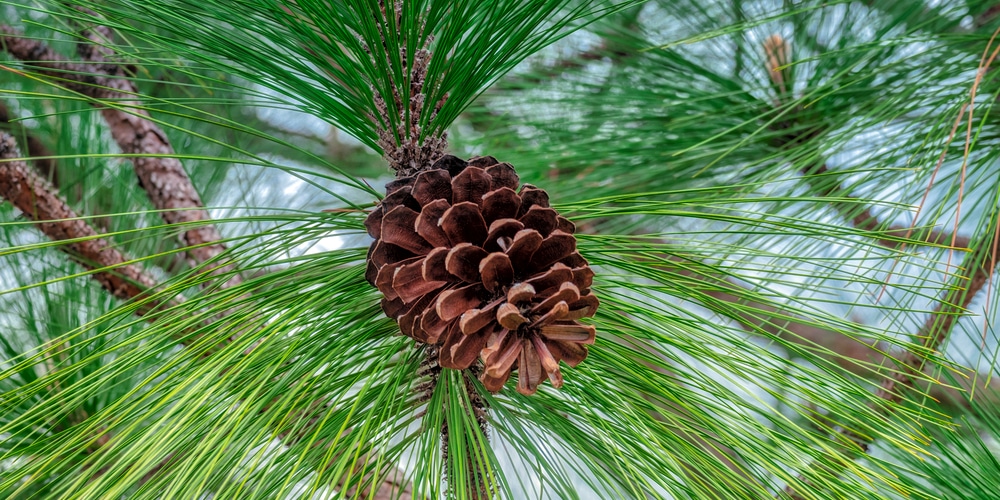You probably recognize the pine trees in your local area and have some childhood association with pines. After all, most of the Christian world associates pine trees with Christmas Trees.
However, the pine family is so vast that you have likely come across some of its other members without knowing you were looking at a pine tree. Pine trees are so ubiquitous that they come with a long history of symbolism.
About the Pine Tree

The pine tree family (Pinaceae) has over 100 species of evergreen trees, which appear in forests all over the world. Some pine tree species are the primary tree in their ecosystems. All pine trees provide critical food supplies to native animals.
Pines also have tremendous value in the human world. Some communities use pine oil as an anti-inflammatory medicine for skin conditions and muscle pain.
Even though pines are softwood, which typically means that the wood is porous and open, pines have close-grained wood. This means that pines are popular for paper products and other lumber projects.
Pine trees grow in predominantly northern, temperate climates all over the world. In addition to growing in North America, different species of Pine trees grow in Europe and Asia as well.
Pine Tree Symbolization
Perhaps because pine trees grow in almost every region of the world and stay beautiful all year long, the pine tree remains a strong fixture in world mythology and symbolism.
In North America, many Native American tribes living in areas where pine trees grow associate them as a symbol of wisdom, life, and fertility. Pine trees symbolize peace in the Oneida story about six tribes that came together to form a nation of unity.
Pine trees also grow in parts of the Mediterranean. Pine was a symbol of the ancient Greek God Dionysus. Dionysus was the God of wine and revelry, and pine resin was a critical component in sealing wine jugs. In some depictions of Dionysus, he wears a pine wreath.
The pine tree has a slightly less rowdy interpretation in Asia. Koreans view the pine tree as honorable and strong, and some Koreans use pine branches as congratulatory offerings for new babies. Likewise, Chinese interpretations of the pine tree represent longevity and solitude.
Pine Trees in Popular Culture
In most of North America and Europe, the pine tree is a symbol of hope and peace in darkness due to its association with the Christian celebration of Christmas.
Though there are pine tree species that grow along the Mediterranean where Christ would have lived, it is unlikely that he would have had the same associations, as winters looked different in Judea. There were no snow-capped pine trees in the winter around Jesus.
The reason for the Christian association with the tree is that modern Christmas traditions pull from European Pagans, who used indigenous pine trees in their winter festivals. Although Jesus Christ was likely born in the spring, the Catholic church linked the celebration of the savior’s birth to midwinter Pagan celebrations to ensure Christianity’s seamless integration into Pagan practices.
The result is that the most common symbolism of pine trees in the Western world is one of evergreen hope and light in darkness and cold. Evergreen scents conjure up cozy fireplace evenings sharing time with family and friends.
What Does a Pine Tree Symbolize: Conclusion
Because pine trees grow all around the world, they are a tree bursting with symbolism and meaning. For Native Americans, pine trees are linked with life and peace. In Asia, people associate the tree with longevity.
Unsurprisingly, humans find resonance in this tree species. In a constantly changing world, to observe a feature of nature that remains fixed despite the changing seasons would certainly strike early humans as worth preserving. You may also be interested in finding out what purple orchids symbolize.

